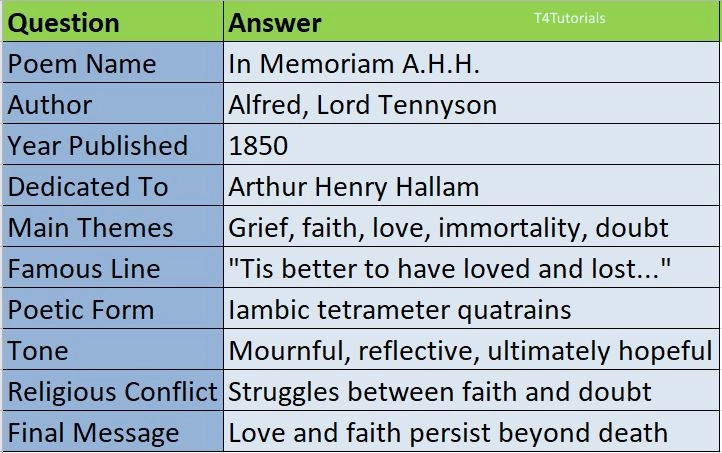Summary:
“In Memoriam A.H.H.” is a long elegy written by Alfred, Lord Tennyson, dedicated to his close friend Arthur Henry Hallam, who died suddenly in 1833 at the age of 22. The poem, published in 1850, reflects Tennyson’s deep grief, struggle with faith, and gradual acceptance of loss. The poem is composed of 131 sections, exploring themes of grief, faith, immortality, and the meaning of life and death. Initially, Tennyson expresses deep sorrow and despair, questioning God’s purpose and the fairness of life. However, as the poem progresses, he gradually finds comfort in the idea of an afterlife and the endurance of love. The famous line “‘Tis better to have loved and lost than never to have loved at all.” comes from this poem, emphasizing the value of love despite pain. Ultimately, the poem serves as both a personal expression of mourning and a philosophical reflection on human existence and divine providence.
10
Score: 0
Attempted: 0/10
Subscribe
| Question | Answer |
| Poem Name | In Memoriam A.H.H. |
| Author | Alfred, Lord Tennyson |
| Year Published | 1850 |
| Dedicated To | Arthur Henry Hallam |
| Main Themes | Grief, faith, love, immortality, doubt |
| Famous Line | “Tis better to have loved and lost…” |
| Poetic Form | Iambic tetrameter quatrains |
| Tone | Mournful, reflective, ultimately hopeful |
| Religious Conflict | Struggles between faith and doubt |
| Final Message | Love and faith persist beyond death |